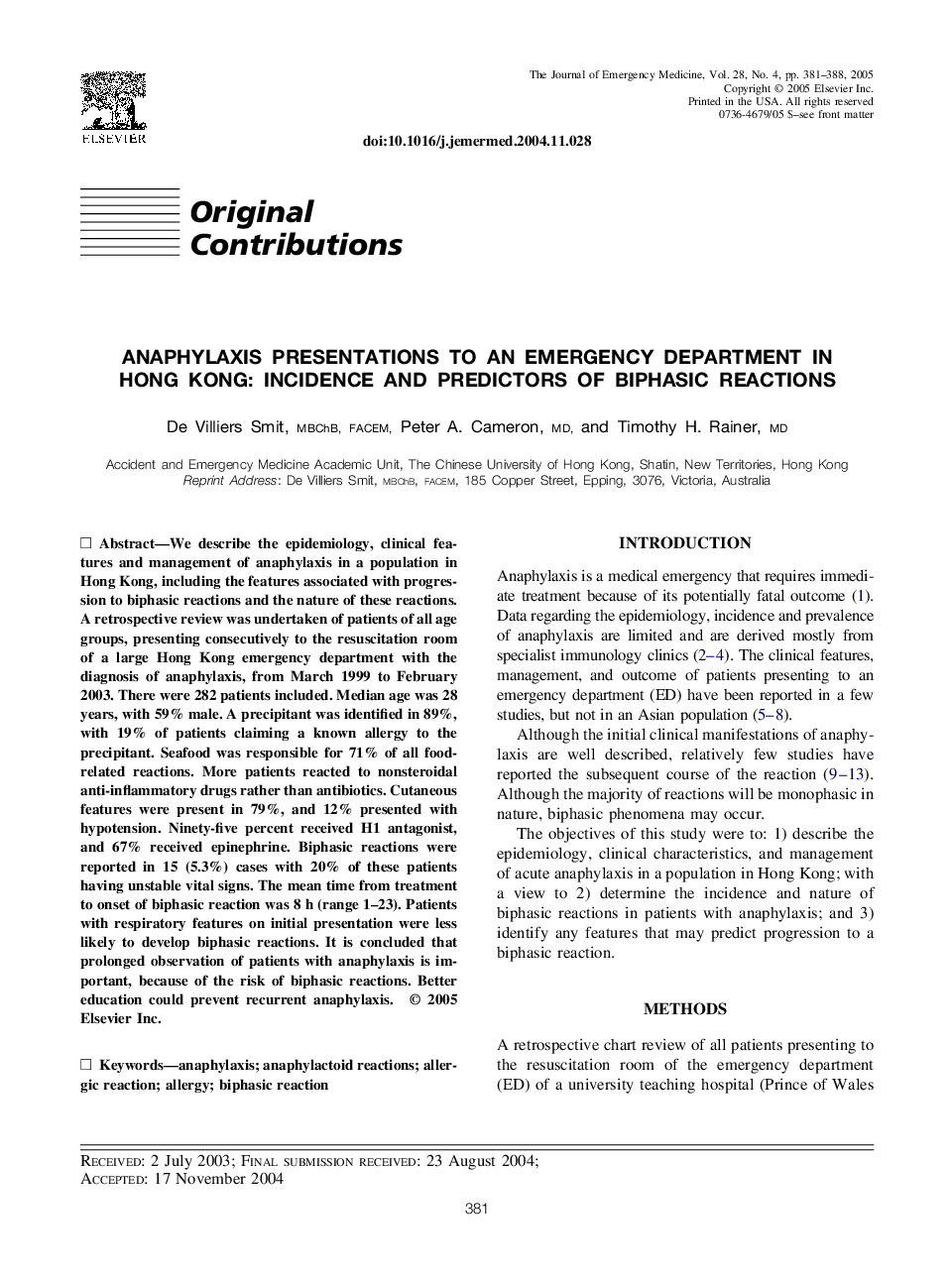| Article ID | Journal | Published Year | Pages | File Type |
|---|---|---|---|---|
| 10021747 | The Journal of Emergency Medicine | 2005 | 8 Pages |
Abstract
We describe the epidemiology, clinical features and management of anaphylaxis in a population in Hong Kong, including the features associated with progression to biphasic reactions and the nature of these reactions. A retrospective review was undertaken of patients of all age groups, presenting consecutively to the resuscitation room of a large Hong Kong emergency department with the diagnosis of anaphylaxis, from March 1999 to February 2003. There were 282 patients included. Median age was 28 years, with 59% male. A precipitant was identified in 89%, with 19% of patients claiming a known allergy to the precipitant. Seafood was responsible for 71% of all food-related reactions. More patients reacted to nonsteroidal anti-inflammatory drugs rather than antibiotics. Cutaneous features were present in 79%, and 12% presented with hypotension. Ninety-five percent received H1 antagonist, and 67% received epinephrine. Biphasic reactions were reported in 15 (5.3%) cases with 20% of these patients having unstable vital signs. The mean time from treatment to onset of biphasic reaction was 8 h (range 1-23). Patients with respiratory features on initial presentation were less likely to develop biphasic reactions. It is concluded that prolonged observation of patients with anaphylaxis is important, because of the risk of biphasic reactions. Better education could prevent recurrent anaphylaxis.
Related Topics
Health Sciences
Medicine and Dentistry
Emergency Medicine
Authors
De Villiers (FACEM), Peter A. MD, Timothy H. MD,
